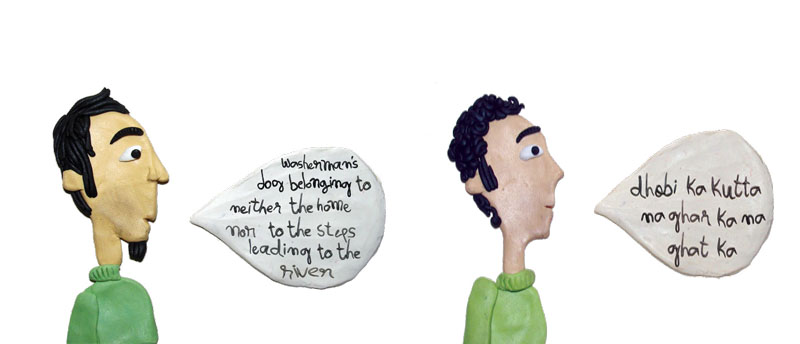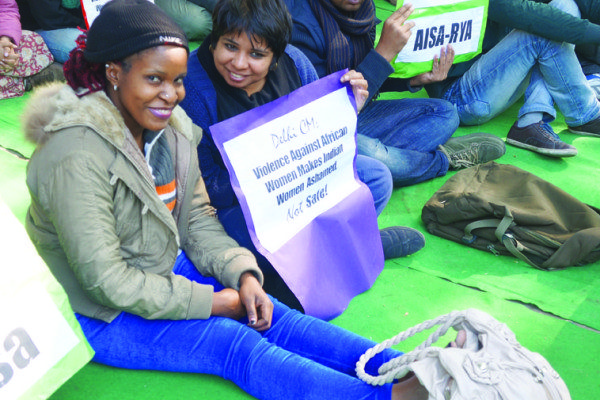Arunava Sinha considers how languages and their literary output are essentially lost, and yet something of them is rescued and given new life, when translated into a more widely read language.
The word ‘translation’ comes, etymologically, from the Latin for ‘bearing across’. Having been borne across the world, we are translated men.
– Salman Rushdie
The irony is inescapable. One of the most powerful methods today to preserve the literatures of the Indian languages is to translate them into English, so that their lifespan extends beyond the finite boundaries of the original language in which they were written. So, even as we wring our hands over the dwindling numbers of people (read: young urban students and professionals) who actually care to read in their ‘mother tongues’, we are busy transferring the literary assets of these languages into English with one eye on perpetuity and the other on a global audience.
There’s no denying the value of translation as a means for stretching both history and geography for a work of literature. The troubling question for a translator, though, is whether the process of transference doesn’t also forcibly uncouple the work from the language in which it was created. Broadly, there are two schools of translation. One says that the translated work must read as though it was written in the target language. The other says that the original language must shine through the translated text precisely so that it is not mistaken for a work written originally in the target language.
What if the translator chose to capture every originality and turn of phrase and onomatopoeic word when rendering a text into English? The words and the grammar might still pass the OED or the Wren-and-Martin test, but wouldn’t the final version be a mongrel without any literary integrity, the classic washerman’s ass, belonging neither to the home nor to the steps leading down to the river? (That didn’t sound so good in translation, did it?)
For someone like me, this, well, translates, into a simple choice: write in English? Or write in Bengali as though it’s English? It boils down to a question, eventually, of choosing between readability and preservation of the exotic nature of the original. This, in turn, is a choice fraught with the politics of language, colonisation (given the historical relationship between ground-up Indian languages and topdown English), class and gender. The political implications of the first two are obvious, but the latter are particularly important because of the difficulty of translating the different registers of class and gender in an Indian language into a corresponding version in English. Very often, these jagged edges tend to be sandpapered for the sake of a smooth reading experience, one that is favoured – for entirely understandable reasons – by editors and publishers. The result is a uniform, liposuctioned idiom that completely camouflages the rawness and colour of the original text when it captures the spoken rhythms of the street or the village.
What the reader of the translation never gets to know, as a result, is the uniqueness of the language lived by the characters in a literary work. Can there be any doubt that while the content may be preserved here through translation, the language is not? And if literature can be looked at as content and language in equal parts – it is other things too, of course, but let’s simplify for convenience –then translation does not conserve it, even though it can create it afresh.
But there might be another strategy for conservation. What if the translator chose to capture every originality and turn of phrase and onomatopoeic word when rendering a text into English? The words and the grammar might still pass the OED or the Wren-and-Martin test, but wouldn’t the final version be a mongrel without any literary integrity, the classic washerman’s ass, belonging neither to the home nor to the steps leading down to the river? (That didn’t sound so good in translation, did it?)
Eventually, a translator must work out her own strategy and square it with her linguistic conscience. But somewhere the nagging feeling won’t leave me – translation neither protects nor furthers the reach of the language of the original. An excellent translation can, of course, enable the original language to be experienced in a different cultural context – as much, perhaps, as we experience our thoughts when they are framed as words.
But what drives a translator if the original language is inevitably a victim of her work? For me, the answer lies in countering my own arguments with a more emotional position. I don’t think that any work originally written in Bengali– the language that my writing life is wrapped around – can lose its ‘Bengaliness’ simply because it is being read in a different language. For, every thought, every nuance, every person, in the original work owes its existence to the Bengali language. And if these thoughts, nuances and persons continue to live in the translated version, then in some sense, so does the original language itself. What’s true for Bengali here is obviously true for all languages.
What makes translation more complicated are the diverse forces that are shaping the Indian languages right now. The advent of formal education and its adoption by the urban middle-classes meant the institutionalising of a particular version of every Indian language. For some languages, the spoken and the written versions were similar, while for the others, there were divergences between a high, written, version and a lower, spoken one. Nevertheless, every language had a ‘standard version’, which was largely, if not entirely, unchanged through much of the twentieth century.
However, with the booming globalisation on one side and the amplification of the subaltern voice on the other, this classroom version has been under increasing threat. The quick osmosis of a crudely international English, the convergence of vocabulary onto a Bollywoodized Hindi, and an inexplicable obsession with abbreviations have combined to inject expressions that are no longer unique to specific languages. Look no further than the way expressions like ossum, masti or congo (for ‘congratulations’) have taken over the discourse without a trace of self-consciousness.
Meanwhile, the voice of the historically oppressed classes is being heard in the literature of the Indian languages with an insistent power that stands very distinctly apart from the frictionless urban patois of yesteryears. The question is: how does a translation capture these two extremes of the churning that Indian languages are going through? To use non-Queen’s English options such as gangsta, African or chutney is ruled out as soon as it is considered – the outcome would be far too artificial. Eventually, the translator can either retain generous portions of the original words and phrases and give their meanings alongside with metaphorical sighs of despair – or simply ignore all of this and bash on with a more homogenous and familiar English.
Neither solution is pleasant. Not unlike brain surgery. It works if done well, but you suspect something vital is gone.
And then again, how many people read The Republic in Greek today? Or the Mahabharata in… er… you get the picture. Languages die, sadly. Literature lives. Translation is the elixir of immortality.
The world cannot be translated; it can only be dreamed of and touched.














